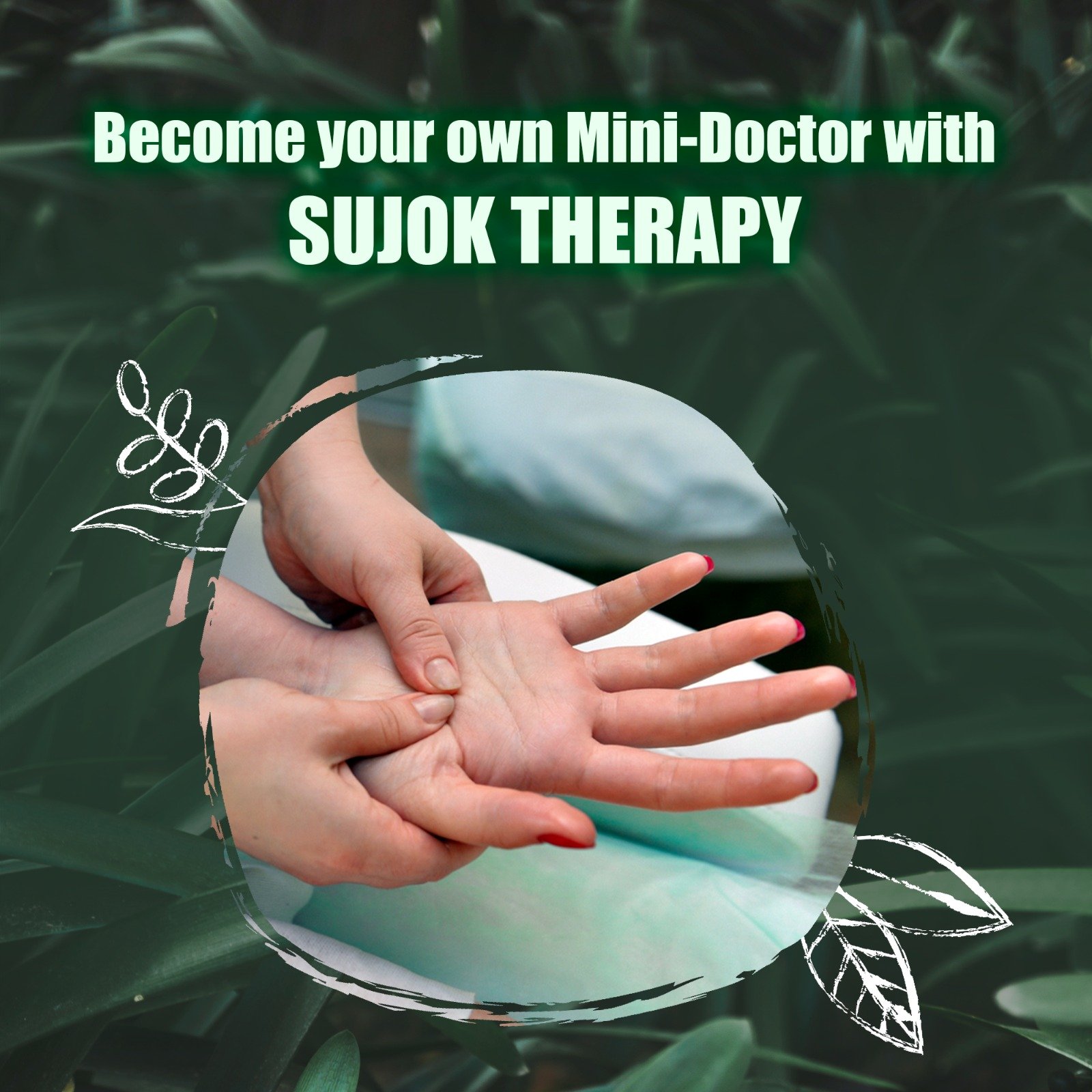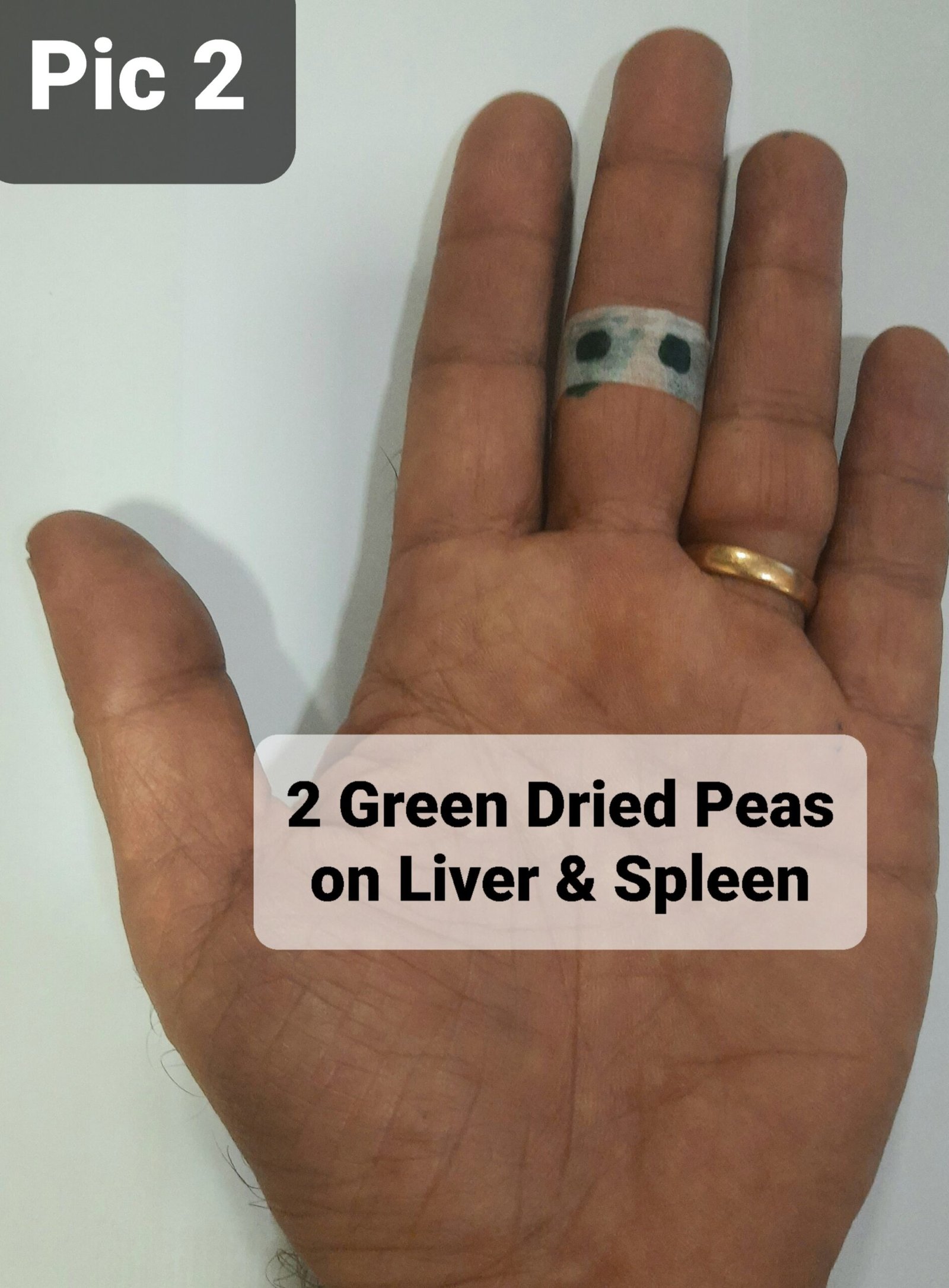Heal Yourself with SuJok Therapy: Korean Magic in Your Hands
Nowadays in India we are experiencing a sharp rise in korean culture whether it may be korean food, their K-pop music or their fashion trends. But have you ever thought about what Koreans follow in terms of maintaining their physical health and mental well being?
The answer is SuJok Therapy !!
In the diverse journey for holistic well-being, various alternative therapies have gained prominence in India after Covid – 19. And among them stands Sujok, which has originated from South Korea but if we deep dive into the process of this therapy we can find its basic principles similar to those in India like acupressure and acupuncture in Marma Shastra, Ayurveda and Chakra Healing.


What exactly is Sujok?
SuJok in particular is made out of two Korean words “Su” which means the hands and “Jok” meaning feet, they combinedly represent all the organs and meridians in the human body. The primary principle is that specific points on the palm and the feet correspond to various organs and systems within the body. By stimulating these points, Sujok practitioners aim to restore balance and promote overall health without the use of any medicines.
Principles of Sujok Therapy
- Correspondence System: Sujok therapy follows the correspondence system, where points on the hands and feet mirror the body’s structure. Each finger and toe is associated with specific organs, allowing for targeted treatment.
- Natural Healing: Sujok emphasizes the body’s innate ability to heal itself. By activating specific points, energy flow is enhanced, triggering the body’s natural healing mechanisms.
Techniques in Sujok Therapy
- Acupressure: Gentle pressure is applied to specific points on the hands and feet, promoting relaxation and facilitating energy flow.
- Moxibustion: Heat is generated by burning a herb called moxa near specific points, stimulating energy circulation.
- Seed Therapy: Small seeds or magnets are attached to specific points with adhesive tape, providing continuous stimulation.
- Magnet Therapy: Magnets are utilized to influence the flow of energy by placing them on specific points, aiming to enhance overall well-being and alleviate discomfort.
- Twist Therapy: This technique involves gentle twisting movements applied to specific joints or areas of the body, promoting flexibility, and addressing blockages in energy flow.
- Acupuncture: Fine needles are inserted into specific points on the body to stimulate energy flow and promote balance within the body’s meridians, contributing to overall health and vitality.
What is the SuJok Ring?
The SuJok ring is a small, elastic, spiky ring designed to massage the fingers and toes. It is based on the principles of SuJok therapy and helps stimulate acupressure points. Rolling the ring along the fingers or toes promotes energy flow, relieves stress, and enhances overall circulation.
How to Use the SuJok Ring:
- Place the ring on a finger or toe.
- Roll it up and down gently for 1-2 minutes.
- Repeat on all fingers or toes for a complete session.
The SuJok ring is portable and can be used anytime, making it a convenient tool for self-care and relaxation.
The Benefits of Sujok Therapy
Physical Well-being
- Pain Management: Sujok therapy is renowned for its effectiveness in alleviating various types of pain, including back pain, joint pain, and headaches.
- Improved Circulation: By enhancing energy flow, Sujok contributes to improved blood circulation, supporting overall cardiovascular health.
- Enhanced Immunity: Regular Sujok sessions are believed to boost the low immunity, aiding in the prevention of illnesses.
Mental and Emotional Well-being
- Stress Reduction: Sujok therapy promotes relaxation, reducing stress levels and fostering a sense of well-being.
- Emotional Balance: The holistic approach of Sujok aims to restore balance not only in the physical body but also in emotions and mental states.
Sujok for Specific Conditions
- Digestive Disorders: Sujok therapy has shown promise in addressing digestive issues, promoting gastrointestinal health.
- Respiratory Conditions: It is believed that Sujok can assist in managing respiratory conditions like asthma and allergies.
- acupressure points for piles
Integrating Sujok Into Your Wellness Routine
Self-Care Practices
- Hand Exercises: Simple hand exercises based on Sujok principles can be incorporated into daily routines for self-care.
- Acupressure at Home: Learning basic acupressure points allows individuals to perform self-healing techniques at home.
Conclusion: Embracing the Healing Power of Sujok
Sujok therapy, with its profound principles and versatile techniques, offers a holistic approach to well-being. As we navigate the complexities of modern life, integrating practices like Sujok into our wellness routine can provide a path to balance and vitality. Whether seeking relief from physical ailments or aiming for emotional and mental harmony, the secrets of Sujok are waiting to be explored for a healthier, more balanced life.
Embark on a Journey to Wellness with the Ancient Wisdom of Sujok!


Frequently Asked Questions ?
Yes, Sujok Therapy is an effective complementary healing technique. Many people have experienced relief from pain, stress, digestive issues, and respiratory problems. However, results vary depending on individual conditions and consistency in application. It is safe, non-invasive, and can be used alongside conventional medicine.
Sujok Therapy uses various seeds for healing, including:
- Fenugreek seeds – For pain relief and respiratory issues.
- Black pepper seeds – Helps improve circulation and clear congestion.
- Green gram (moong dal) – Reduces inflammation and swelling.
- Mustard seeds – Provides warmth and relieves joint pain.
- Wheat grains – Boosts vitality and strength.
These seeds are taped to specific acupressure points to stimulate natural healing.
- Acupressure is a holistic healing technique that applies pressure to specific points on the body to relieve pain and improve energy flow.
- Sujok Therapy is a specialized form of acupressure that focuses on treating the entire body through corresponding points on the hands and feet. It integrates seed therapy, color therapy, and magnet therapy for enhanced healing.
Yes, Sujok Therapy can help manage swollen adenoids by stimulating specific points on the hands and feet to reduce inflammation and improve immunity.
Results vary based on the condition being treated. Some people experience immediate relief, while others may need multiple sessions to see significant improvements but it should take 2-3 months where you can start seeing the results.
Sujok Therapy is generally safe and non-invasive. However, improper application of pressure points may cause temporary discomfort. It is best to learn from an expert or a certified practitioner.
Korean Sujok Therapy is the original form developed by Prof. Park Jae Woo. It integrates acupuncture, acupressure, seed therapy, and color therapy for a more comprehensive healing approach.
Yes, Sujok Therapy can be used to relieve cough and other respiratory issues by stimulating pressure points that enhance lung function and boost immunity.
In Sujok Therapy, the hand is considered a microcosm of the body. Stimulating specific points on the hand can positively impact corresponding organs, helping with pain relief and healing.
Sujok Therapy is used for headaches, sinusitis, back pain, joint pain, respiratory issues like cough and asthma, digestive disorders, hormonal imbalances, and stress-related conditions.











